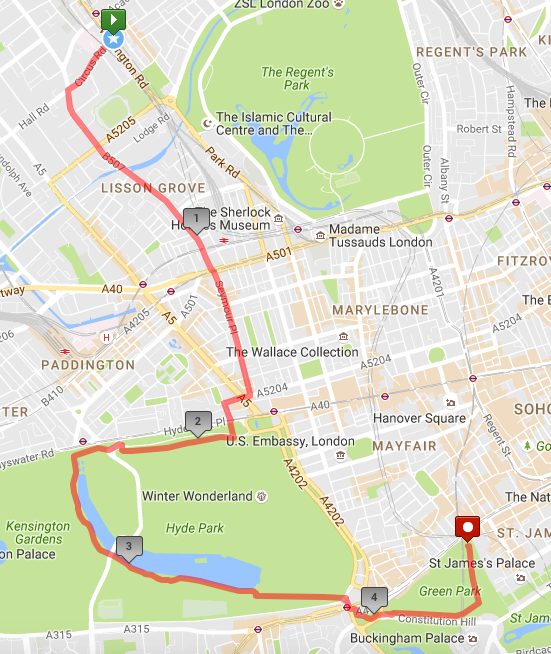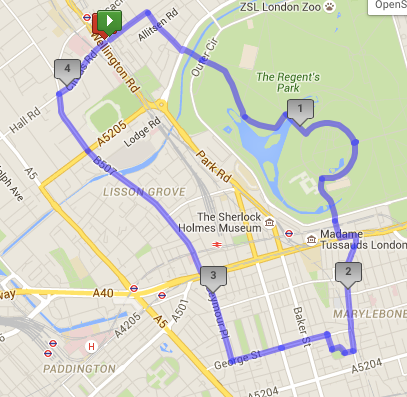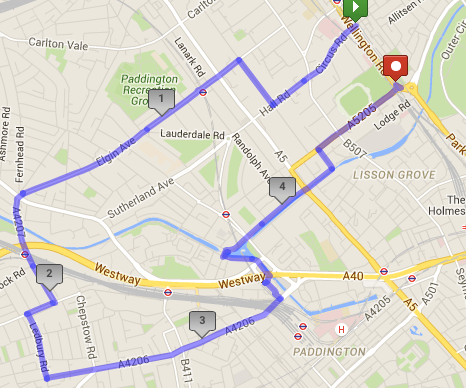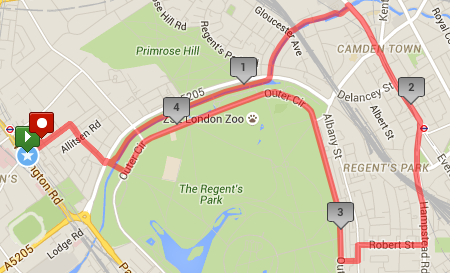
2016-17 Beginners Week 14


Hi everyone,
Last week was HUGE! 3 15-minute segments – that is fantastic. We are SO proud of all of you.
This week, we are keeping it steady with the same 15 minute segments. For those of you going away for the ASL break, just do your best to get in the runs. Remember, beginning this week, the Tuesday run is now a total of 45 minutes exercise time and your weekend run should be 30-35 minutes total. Break it up with walk/runs however feels most comfortable to you.
Several of your coaches are here on Thursday so we are planning to coach the run as usual assuming there is enough interest. Please respond to let us know if you will be here. Let’s give us an extra few minutes of sleep and meet at 8:30 am. We will do a loop so we can get back to SJW to give time to start cooking.
And now for the lengthy part of the email. Feel free to skim or skip it – I know it is quite verbose!
Protein:
Let’s start with protein because that is probably the most critical component as you increase exercise intensity or duration. When you run, you create tiny tears in your muscle fibers and protein is required to repair that damage. For female long-distance runners, experts suggest taking in about 90g a day (or 1.6-1.8g/kg of body weight). That’s a lot of protein – it takes a concerted effort to get there and at our level, we don’t need that much. Make it “clean” protein when possible – lean meats, fish, nuts, yogurt, lentils/pulses and low-fat milk (this is the one low-fat product that most nutritionists agree is fine). Most professional runners eat salmon like crazy – I’ve never heard a nutritionist say that salmon is THAT much better than other fish, but a lot of very experienced runners sing its praises.
Carbohydrates:
A lot of trainers will encourage you to increase your carb intake, but I don’t fully agree (particularly for our type of running). It may be necessary for athletes training at extemely high intensity zones, but that’s not what we’re doing. Bottomline…. we are trying to teach our bodies to use fat as fuel. Fat is easier to access as an energy source and requires less fine-tuning in terms of timing carb intake during exercise. Our bodies have about 1000-1200 “easy access” calories available which will get most ladies about 10-11 miles (depending on their weight and fitness level). After that we will use gels (carbs) to fuel that last 2-3 miles of a half-marathon. If you increase your carb intake on a daily basis, then your body starts expecting a constant feed of carb fuel and may begin to resist going to fat as a fuel source. Your body needs carbs so don’t completely cut them out – just choose clean carbs, complex when possible, ie. grains, wholewheat products, basmati rice (the longer the grain the better – long grain basmati is better for you than even brown rice). Bread is not evil, just don’t rely on it as your major carb source. Sourdough bread is better for you (usually made with naturally occuring yeast) than traditional loaves.
Fat:
Fat is necessary in our diets. I would make a nutritionist cringe by explaining it so simply, but basically fat creates a slower release of energy/fuel. It’s as though you’ve taken a time release medication rather than a typical dose when you combine a bit of fat with your other nutrition sources. Fat from avocados, olive oil, nuts, etc is obviously better for you than fat in brownies, cookies, etc (sorry about that!!!). Some current research is suggesting it is actually it’s the sugar in those products rather than the saturated fat that is causing a big problem with obesity, diabetes and heart disease. We can let the scientists battle that out – for us, just try to get your fat from more natural foods.
With all nutrition, the closer you can get to whole food, the better (i.e., apples are better than applesauce, whole vegetables are better than pre-packaged ones). Basically, the closer your food looks to how you would find it “in-situ”, the better. That concept is one thing on which all nutritionists/dietitians seem to agree.
Before you run, I would suggest the following:
That could be a half bagel with cream cheese, yogurt with nuts (if the nuts don’t upset your stomach), a smoothie, or try oatmeal/porridge – it wins the prize for a near-perfect carb/protein/fat mix for pre-run. Most people find simpler carbs work better before a run than complex carbs as they are more easily digested (so a plain bagel instead of a wholegrain/seeded bagel). Ideally, eat the pre-run meal 90 minutes before running. Sometimes that is just not possible, so the closer to the run that you eat, the more you should consider simplier carbs for easier digestion. The latest research on coffee/caffeine pre-exercise, suggest there is no impact on performance, but a huge impact on perceived exertion. This is interesting to me – basically these new studies conclude that given two athletes who have eaten the exact same thing, and are asked to perform at the exact same level, and who have the exact same result feel differently about how hard the session was. The one who has caffeine in their system will feel it was easier – their “perception of exertion” is lower.
Within 30 minutes after you run, I would suggest the following:
The protein piece is critical as is the timing of this food. Again, a nutritionist/scientist would cringe at how I try to explain this, but here we go… when you exercise your muscles are agitated/traumatized. The cell membranes temporarily become more porous (instead of a wall, it’s more like a mesh allowing the flow of nutrients easy passage). Some post-run ideas would be a latte and yogurt, a latte and a piece of fruit or a latte and half a skinny muffin. I’ve attached the Starbucks nutritional info to make this easier for you. Basically a tall, skinny latte has 14g of carbs, 10g of protein and 0g fat – so you’re looking for another 35g of carbs in addition to the latte. All of this pre/post run info would apply to longer runs and what qualifies as a long run is different from runner to runner. You are probably just fine eating whatever you normally consume until about mid-end January when our runs lengthen.
Click here for Starbucks beverage nutrition info
Click here for Starbucks food nutrition info
Hi everyone,
We’re really moving along now in our training and you guys are all doing AMAZING! Last week was another jump and you all took it in stride. We will be going up a bit more this week but we will hold the course for next week for Thanksgiving week.
SAVE THE DATE – December 8 – Holiday Lights Run
A few years ago, a M/W/F runner suggested the group do an early-morning run to see the lights on Oxford and Regent Streets and it has become a tradition. It is incredible to see the lights when it’s dark and there is no one on the street. We will leave at 6 am and will run from Barclays down to Oxford and Regent and circle back to Bond Street to take the tube home. We should be back in SJW around 7:15, give or take a few minutes, so in time to get the kids to school if you have a little help getting them up. I hope you all can make it.
We have some significant increases in our training, but you all are ready – really! But there are some important things we need to discuss, so bear with me because this email is a bit long.
We have reached a turning point in our training with this coming week’s run. We will be running 3 15-minute segments with 3 minutes of walking in between. Think about that – remember running 60 seconds those first weeks and we all thought we were going to die. Then two minutes…. well, it might as well have been a lifetime. We know it’s not easy – learning to run is challenging, but think of where you’ve come from. We’re putting in an hour of total time now – it’s amazing what you’re doing. We are at a critical point in our training where the routine begins to change… so I’ll just jump right in and start explaining.
I understand that you have no point of reference, so you have no idea how well you are doing. We’re running 4 miles now, over and over again. I know it’s not easy, but you are doing it. You have the worst of it behind you. It’s A LOT harder going from 0 running minutes to 1 running minute, or from 1 to 2 minutes – those are difficult beyond belief. In the next few weeks, we are transitioning into straight running, no designated walking breaks. That may sound scary, but think about where we run. Even though I say we are running 50 or 60 minutes non-stop, there will be street crossings. You will learn to pray for the little “red-man light”. My message is that you can do this. You have each other to lean on and all of your coaches to help out however we can.
So… on to this week! Here is the route for the week
Head to Regent’s Park via Charlbert. Cross the Outer Circle, enter Regent’s, and stay right, running past the first bridge and then crossing the second one. Take a left on the Inner Circle and continue until York Bridge. Go left onto York Bridge and head out of the park, crossing Marylebone Road. Go left on Marylebone then right on Marylebone High Street which becomes Thayer. Take a right on Hinde Street and a right on Manchester Square. Run past the Wallace Collection and left on George Street to Seymour Place. Go right on Seymour Place, cross Marylebone Road, and take Lisson Grove/Grove End back to Circus. Take a right on Circus to end at Barclays.


Beginner Week 11
